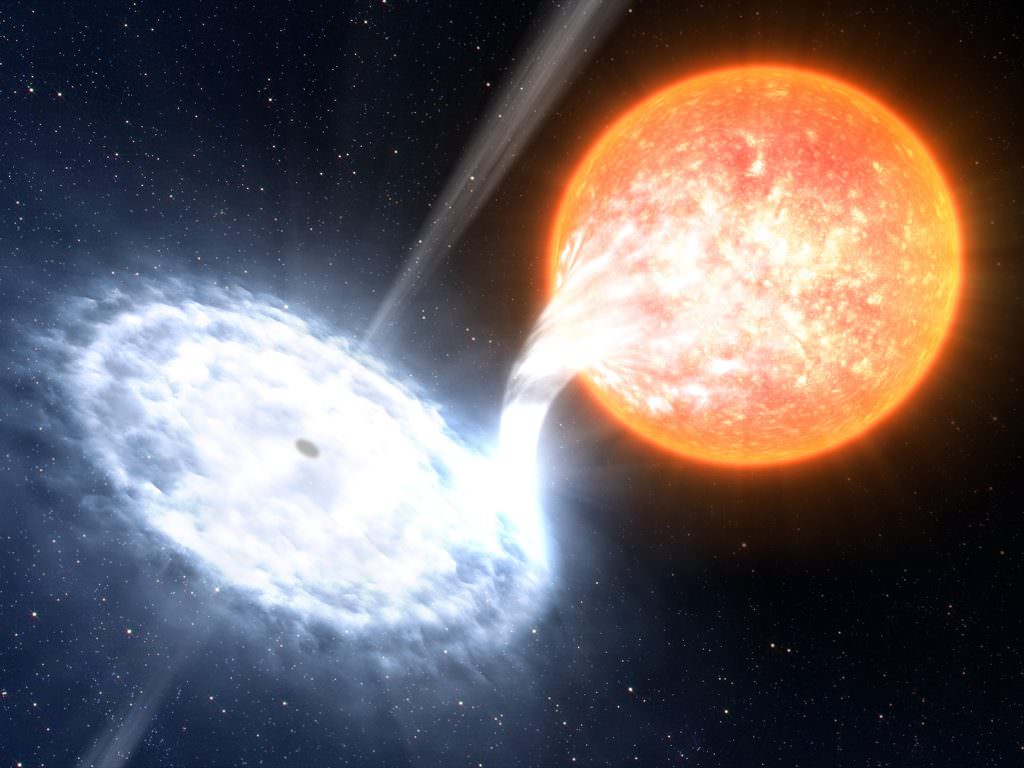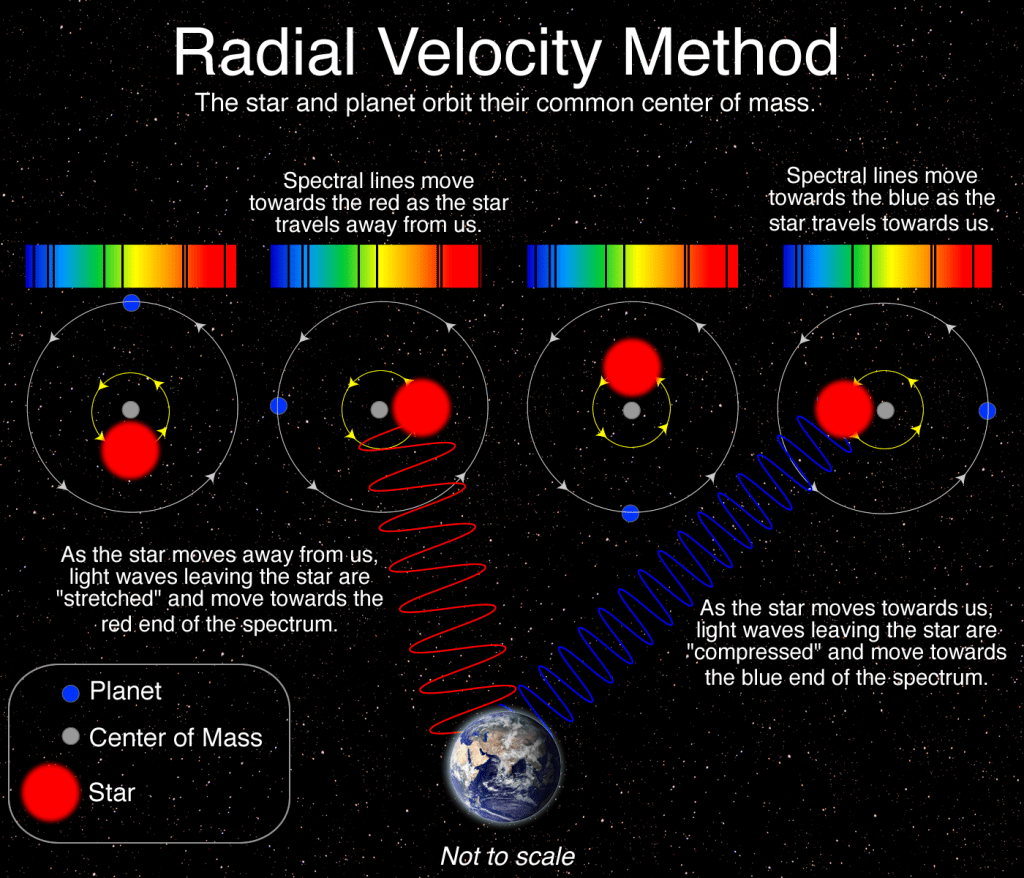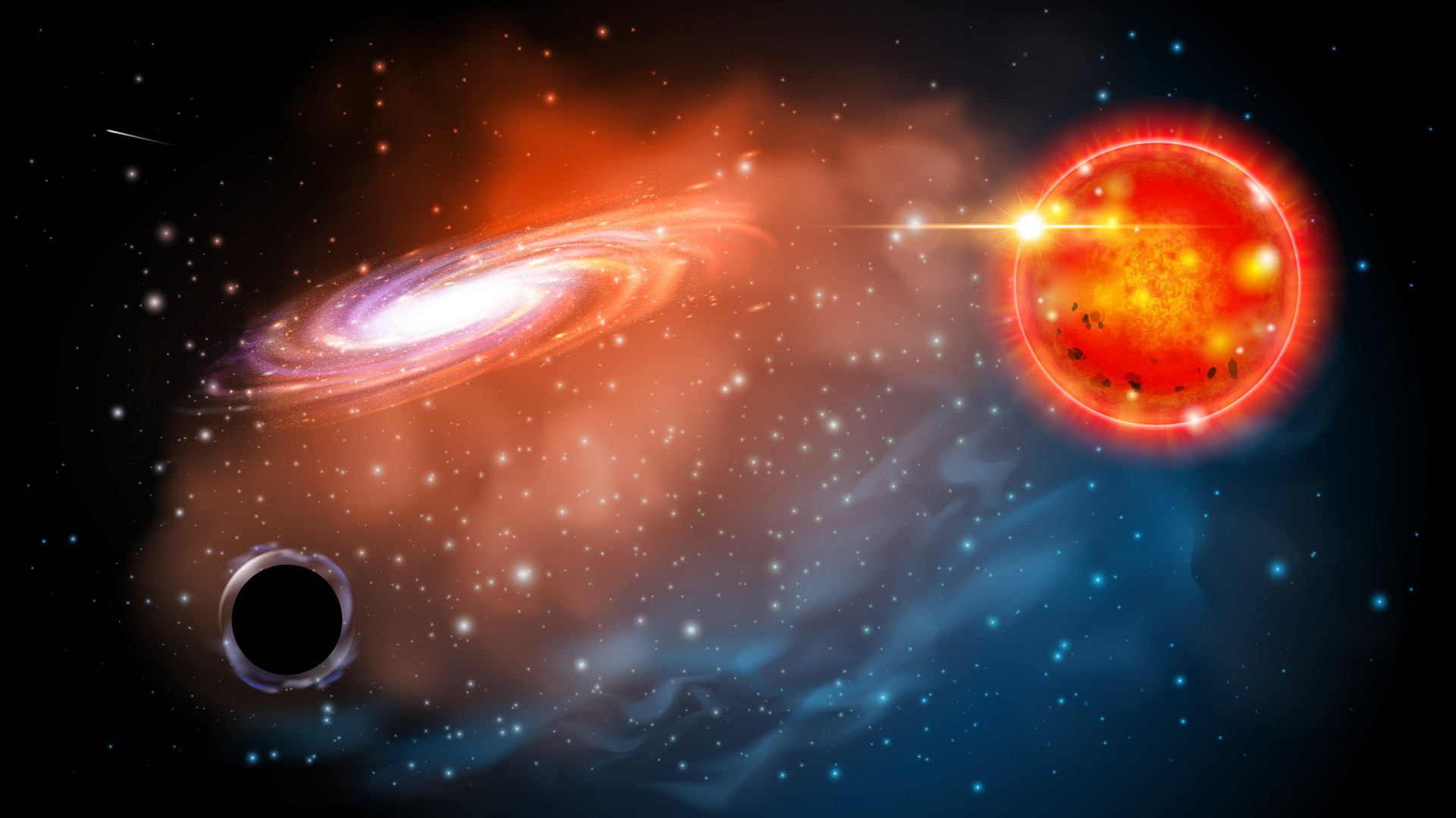Black holes are one of the most awesome and mysterious forces of nature. At the same time, they are fundamental to our understanding of astrophysics. Not only are black holes the result of particularly massive stars that go supernova at the end of their lives, they are also key to our understanding of General Relativity and are believed to have played a role in cosmic evolution.
Because of this, astronomers have diligently been trying to create a census of black holes in the Milky Way galaxy for many years. However, new research indicates that astronomers may have overlooked an entire class of black holes. This comes from a recent discovery where a team of astronomers observed a black hole that is just over three Solar masses, making it the smallest black hole discovered to date.
The study, “A noninteracting low-mass black hole–giant star binary system“, recently appeared in the journal Science. The team responsible was led by astronomers from Ohio State University and included members from the Harvard-Smithsonian Center for Astrophysics, The Observatories of the Carnegie Institution for Science, the Dark Cosmology Center, and multiple observatories and universities.

The discovery was especially noteworthy because it identified an object that astrophysicists previously didn’t know existed. As a result, scientists are now forced to reconsider what they thought they knew about the population of black holes in our galaxy. As Todd Thompson, a professor of astronomy at The Ohio State University and lead author of the study, explained:
“We’re showing this hint that there is another population out there that we have yet to really probe in the search for black holes. People are trying to understand supernova explosions, how supermassive black stars explode, how the elements were formed in supermassive stars. So if we could reveal a new population of black holes, it would tell us more about which stars explode, which don’t, which form black holes, which form neutron stars. It opens up a new area of study.”
Because of the influence they have over space and time, astronomers have long been searching for black holes and neutron stars. Since they are also what results when stars die, they could also provide information on the life cycles of stars and how elements are formed. In order to do that, astronomers first need to determine where black holes are located in our galaxy, which requires that they know what to look for.
One way to find them is to look for binary systems, where two stars are locked in orbit with each other due to their mutual gravity. When one of these stars undergoes gravitational collapse near the end of its life, it will either collapse to form a neutron star or a black hole. If the companion star has reached the Red Branch Phase (RBP) of its evolution, it will expand considerably.

This expansion will result in the red giant becoming subject to its black hole or neutron star companion. This will result in material being pulled from the former’s surface and slowly consumed by the latter. This is evidenced by the heat and x-rays that are emitted as material from the star is accreted onto its black hole companion.
Until now, all the black holes in our galaxy identified by astronomers were between five and fifteen solar masses. Neutron stars, by contrast, are generally no larger than about 2.1 solar masses, since anything larger than 2.5 solar masses would collapse to form a black hole. When LIGO and Virgo jointly-detected gravitational waves caused by a black hole merger, they were 31 and 25 solar masses, respectively.
This demonstrated that black holes could occur outside of what astronomers considered to be the normal range. As Thompson said:
“Immediately, everyone was like ‘wow,’ because it was such a spectacular thing. Not only because it proved that LIGO worked, but because the masses were huge. Black holes that size are a big deal – we hadn’t seen them before.”
This discovery inspired Thompson and his colleagues to consider the possibility that there might be undiscovered objects that resided between the largest neutron stars and the smallest black holes. To investigate this, they began combining data from Apache Point Observatory Galactic Evolution Experiment (APOGEE) – an astronomical survey that collects spectra from about 100,000 stars across the galaxy.

Thompson and his colleagues examined this spectra for signs of changes that would indicate if a star might be orbiting around another object. Specifically, if a star were showing signs of Doppler shift – where its spectra will alternate between shifting towards the bluer end and then redder wavelengths – this would be an indication that it might be orbiting an unseen companion.
This method is one of the most effective and popular means of determining if a star has an orbiting system of planets. As planets orbit a star, they exert a gravitational force on it that causes it to move back and forth. This same kind of shift was used by Thompson and his colleagues to determine if any of the APOGEE stars might be orbiting a black hole.
It started with Thompson narrowing the APOGEE data down to 200 candidates that proved to be the most interesting. He then gave the data to Tharindu Jayasinghe (a graduate research associate at Ohio State) who then used data from the All-Sky Automated Survey for Supernovae (ASAS-SN) – which is run by OSU and found over 1,000 supernovae – to compile thousands of images of each candidate.
This revealed a giant red star that appeared to be orbiting something that was much smaller than any known black hole, but much larger than any known neutron stars. After combining the results with additional data from the Tillinghast Reflector Echelle Spectrograph (TRES) and the Gaia satellite, they realized that they had found a black hole roughly 3.3 times the mass of the Sun.
This result not only confirms the existence of a new class of low-mass black hole, but it also provided a new method for locating them. As Thompson explained:
“What we’ve done here is come up with a new way to search for black holes, but we’ve also potentially identified one of the first of a new class of low-mass black holes that astronomers hadn’t previously known about. The masses of things tell us about their formation and evolution, and they tell us about their nature.”
Further Reading: OHS


This article writes:
One way to find them is to look for binary systems, where two stars are locked in orbit with each other due to their mutual gravity. When one of these stars dies, the intense gravitational pull it generates will begin to pull matter from the other star. This is evidenced by the heat and x-rays that are emitted as material from the star is accreted onto its black hole companion.
This is bullshit. When a star dies, what remains (whether it is a neutron star, a black hole ore something else) is not havier than the original star. So, wehen the original star did nog pull gas from its binary partner, the remainder will not do so. Usually a star or its remainder starts pulling gas from its partner when the partner becomes a big red giant, and its gas is much closer to the star or remnant.
Scrolled down to leave the same comment.
That is not what was said there (i.e. becoming heavier). But I take your point, I left out the RBP of the companion star.